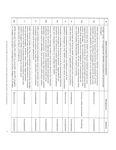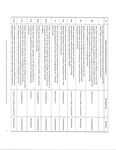PERFORMANCE AUDIT #3 Portland Public Schools Bond Construction Program: May 2016 - Hirsh and Associates, Bill Hirsh and Richard Tracy
←
→
Page content transcription
If your browser does not render page correctly, please read the page content below
Portland Public Schools Bond Construction Program:
PERFORMANCE AUDIT #3
May 2016
Hirsh and Associates,
Bill Hirsh and Richard TracyMEMORANDUM
To: Carole Smith, Superintendent;
Jerry Vincent, Chief, School Modernization
From : Richard Tracy and Bill Hirsh
Date: May 2016
Re: School Bond Construction Program - Performance Audit #3
Attached is our 2016 performance audit report of the School Bond Construction Program
for the Portland Public School district. This is the third of four annual audits and
principally covers the period from April 2015 to March 2016.
We would like to thank the management and staff of the school district and of the Office of
School Modernization for their assistance and cooperation in conducting this audit.
We look forward to meeting with the School Board to more fully discuss the report’s
findings and recommendations.Contents
SUMMARY ....................................................................................................................... 1
INTRODUCTION ........................................................................................................... 5
Overview of bond program resources, budgets, and schedules
Office of School Modernization
Public accountability structures
Audit objectives, scope, and methods
AUDIT RESULTS ....................................................................................................... 15
High School Modernizations Projects
1. Franklin High School ...................................................................................... 16
2. Roosevelt High School .................................................................................. 28
3. Grant High School .......................................................................................... 33
4. Master planning for three additional high schools .......................................... 40
Other major projects
5. Faubion PK-8 school ..................................................................................... 43
6. Interim facilities: Marshall HS and Tubman Elementary .............................. 46
7. Summer Improvement Projects ...................................................................... 48
2012 Bond Program Administration
8. Program management and staffing ................................................................ 52
9. Procurement and contracting .......................................................................... 59
10. Public engagement and communications ........................................................ 65
11. Equity in public purchasing and contracting .................................................. 67
12. Prior audit recommendations .......................................................................... 71
School Bond Construction Program #3 May 2016RECOMMENDATIONS .................................................................................. 73 MANAGEMENT RESPONSE TO THE AUDIT ..................................... 77 APPENDICES A. Cooperative Purchasing Agreements: ORS excerpts ........................................ A-1 B. Status of Corrective Actions: 2014 and 2015 Audit Recommendations .......... B-1 School Bond Construction Program #3 May 2016
SUMMARY
T
he Portland Public School district is into the fourth year of an ambitious eight-year
capital improvement program to modernize, replace, and improve school buildings.
With the passage of Ballot Measure 26-144 in November of 2012, the district was
authorized to issue $482 million in general obligation bonds to finance the costs of planning,
design, and construction. Additional resources have increased the projected improvement budget
to approximately $551 million. This report is the third annual performance audit of how well the
district is managing and implementing the school building improvement bond program.
Program enters busiest period
After several years of major planning and design efforts, the bond program over the past 12
months began its busiest building period to date. Construction started at the two major
modernization projects at Franklin and Roosevelt high schools, and demolition was completed
and work has begun on the new Faubion PK-8. Twenty-seven schools throughout the district
received summer improvements such as seismic strengthening, access improvements, new roofs,
and science classroom upgrades. Work was completed at Tubman and Marshall so that students
from Faubion and Franklin respectively could begin classes at these interim spaces for the start
of the 2015-2016 school year.
In addition, the bond program started and completed master planning for Grant high school
and entered the schematic design phase in anticipation of construction beginning in the early
summer of 2017. Master plans were started for three other high schools – Lincoln, Benson, and
Madison – that will serve as the basis for further design and construction if a new bond is
approved by voters.
Although original baseline schedules have not been met in several instances, the district is on
revised schedules for planned occupancy dates for the major construction projects. While some
School Bond Construction Program #3 1 May 2016projects have exceeded original planned budgets, the program currently has addressed many of
these increases by using contingencies and reserves. As of the final drafting of this report, the
Franklin high school project is estimated to complete substantially over budget. The Grant high
school project also has unresolved budget concerns. The district and Office of School
Modernization (OSM) need to stay vigilant to control project scope and cost increases as
remaining reserves and contingencies are drawn down.
High school modernization projects: progress and risks
The three modernization projects at Franklin, Roosevelt, and Grant are the most costly and
complex of the bond program projects. Representing over 57 percent of the total bond budget of
$551 million, these projects involve major renovation of existing historical structures. The
district chose to employ an alternative procurement and contract methodology called
Construction Manager/General Contractor (CM/GC) to construct these projects.
We focused much of our audit effort this year reviewing the status of these projects and their
compliance with statutes, policies, and best practices for CM/GC projects. For the two projects
under construction, FHS and RHS, the district is projecting that it will complete the projects on
schedule. FHS will complete substantially over budget and OSM projects that RHS will
complete within its adjusted budget. In most respects OSM and the CM/GC firms have worked
collaboratively to develop designs and construction documents, prepare project budgets, and bid
work to subcontractors. However, we did find deviations from district policies and weaknesses in
controls that increase financial risk and may result in higher costs. Specifically,
• The GMP amendment to the Franklin CM/GC contract language modified the
intent of the GMP by negating the guarantee that the CM/GC firm will
provide a complete facility at an agreed upon maximum price
• A buyout reconciliation change order to the Franklin CM/GC contract
language has increased the contractor contingency budget and allowed
overhead without demonstrating that the scope of the project has increased
• For the Franklin and Roosevelt projects, OSM protocols for reviewing and
approving potential changes were inadequate to ensure that work was
School Bond Construction Program #3 2 May 2016approved before starting and that appropriate level of management approved
the changes
The Grant high school master planning process resulted in an innovative conceptual design
that received significant public input and was approved by the Board of Education in December
2015. However, based on a conceptual estimate prepared by the architect for the master plan, the
budget for the school does not include sufficient project contingency amounts. The budget based
on the master plan estimate and documentation from OSM provides a project contingency of
approximately 3.5 percent, significantly less than the 10 percent standard employed for Franklin
and Roosevelt high schools at the start of design. An additional approximate $7.5 million would
be needed to maintain a 10 percent contingency. Action is needed by the completion of
schematic design to adjust the estimated Grant high school budget through revisions to scope,
adding resources, and/or revisions to the project estimate. At the time of final drafting of this
report, OSM reports that intends to address this concern.
We believe that a variety of factors have contributed to the conditions discussed above
including that lack of complete standard operating procedures and policies and failure to
consistently use existing standard operating procedures and guidelines. We make a number of
recommendations to help OSM address these concerns.
Program management: foundation in place with improvements needed
OSM has established a comprehensive foundation to manage and administer the bond program.
The program reports regularly on schedule and budget status, monitors budget and budget
changes, reviews and authorizes payment requests, and continually evaluates the costs of
program management overhead. In addition, the program has developed and implemented an
extensive infrastructure to ensure strong communication with the community on the status of the
bond program and extensive public engagement in the development of project designs. With the
Purchasing and Contracting department in the lead, OSM has largely complied with district and
state policies to ensure the fair and competitive selection of consultants and contractors.
Concerns with one selection process highlighted the need for, and resulted in, internal
improvements in the RFP process.
School Bond Construction Program #3 3 May 2016Although the program has experienced significant turnover in upper level management this
past year, the blended organizational staffing team has maintained momentum toward
completing the program in accordance with plans. We note that the bond program could
strengthen systems in several areas to improve management oversight, tighten compliance with
policies, procedures, and best practice, and to increase the potential that equity goals will be
achieved. Some of these improvements include:
• Development and use of Project Team Management Plans to guide the design
and construction of individual projects and to provide the basis for more
effective supervision and control
• Enhancements to the procedures for review and selection of consultants to
ensure more informed selection of qualified firms
• Increased flexibility in CM/GC contracts to permit the selection of more
MWESB subcontractors
• Beginning processes for selection of firms earlier to avoid risks to schedule
and budget
• Fully complete audit recommendations in a timely manner
The bond program has taken action on many of the recommendations that we made in our
2014 and 2015 audit reports. Additional effort is underway to address the remaining
recommendations. A summary of the status of these recommendations is contained in
Appendix B. We make new recommendations in this report that are compiled and summarized in
Recommendations section on page 73.
School Bond Construction Program #3 4 May 2016INTRODUCTION
I
n November of 2012, the voters of the of the Portland Public School district approved
Ballot Measure 26-144 authorizing the Portland Public School district to issue up to $482
million in general obligation bonds to finance capital projects to replace, renovate, and
upgrade schools and classrooms throughout the district. This is the third of four performance
audits of the School Building Improvement Bond program and covers the period from April
2015 to March 2016. The 2014, 2015, and 2016 performance audits can be found on the PPS
Bond Program website at www.pps.k12.or.us/bond. This audit evaluates the degree to which the
program is achieving its goals and objectives and is following applicable laws, policies, and
procedures. The overall purpose of the performance audits is to provide useful information to
help strengthen the operations of the bond program and to assist in providing public
accountability for the use of voter-approved tax resources.
Overview of bond program resources, budgets, and schedules
T
he following tables provide current information on the bond program resources,
project budgets, and schedules as of March 2016. As shown in figure 1, the School
Building Capital Improvement Bond program derives funds from a variety of sources.
Total capital improvement program funds from all sources have grown, increasing from
$499,107,903 in March 2014 to $550,538,965 in March 2016. While general obligation bonds
comprise the vast majority of funding for the bond program, the program also receives support
from various state grants, contributions, bond premium/debt savings, and from partnerships with
other organizations.
School Bond Construction Program #3 5 May 2016Figure 1 2012 Capital Improvement Bond Program resources from all sources
2014 2015 2016
General Obligation Bonds $482,000,000 $482,310,324 $482,310,318
Bond premium/debt savings $13,870,000 $13,870,000 $47,081,952
Concordia University - $879,306 $15,539,710
SRGP funds and PPS contribution
$1,500,000 $1,495,172 $2,917,458
(seismic upgrades)
SB1149 funds (energy efficiency and
$801,810 $801,810 $1,606,015
renewable energy)
Debt Repayment $931,509 $568,948 $783,880
Education specifications $300,000 $300,000 $300,000
Facilities and Maintenance capital funds $4,458 $40,732 $198,057
Great Fields - - $65,517
Energy Trust - - $28,580
Partnership funds - - $7,478
TOTAL $499,107,903 $500,266,411 $550,538,965
Source: OSM Operations Summary for March 2014 and March 2016
The School Building Improvement Bond program as of March 1, 2016 is composed of 21
separate projects. These projects include:
• Full modernization of three high schools – Roosevelt, Franklin, and Grant
• Replacement of Faubion PK-8 elementary school
• Nine Summer Improvement Projects to replace roofs, correct seismic
deficiencies and accessibility problems, and upgrade science classrooms
• Master planning for three high schools – Benson, Lincoln, Madison
• Two swing site improvements, and transportation upgrades to provide
temporary facilities for the students at Franklin, Roosevelt, and Grant high
schools and at Faubion PK-8
School Bond Construction Program #3 6 May 2016• Three other separately budgeted projects account for program management
and contingencies, repayment of line of credit debt, and the costs for preparing
Educational Specifications
The table below lists the 21 separate projects managed by the OSM and their original and
current budgets, and the invoices approved for payment as of March 2016.
Figure 2 School Building Improvement Bond program: Projects and budgets
BUDGET (in millions)
Original Current Approved
PROJECT budget budget invoices
Franklin HS $81.6 $106.6 $21.3
Grant HS $88.3 $111.9 $0.7
Roosevelt HS $68.4 $96.6 $15.2
Faubion PK-8 $27.0 $48.9 $4.1
9 Improvement Projects, 2013-19 $67.7 $72.5 $53.5
3 HS Master plans $1.2 $1.3 $0.1
Swing sites and transportation $9.6 $6.9 $4.9
Educational Specifications $0.0 $0.3 $.275
Debt repayment $45.0 $45.0 $45.0
2012 Bond Program * $93.1 $60.5 $13.7
TOTAL $482.0 $550.5 $151.8
Source: OSM Operations Summary March 2016
* 2012 Bond Program project includes program management and administration, reserves, contingencies
Because two of the major HS construction projects and Faubion have just begun the
construction phase, only $152 million in invoices have been approved for payment, about 28
percent of the total bond program budget. Over the next two to three years, program spending
will increase significantly as three major projects largely complete construction.
School Bond Construction Program #3 7 May 2016Figure 3 below shows the principal schedule points for the major construction projects of the
bond program. Franklin and Roosevelt high school projects started construction on time and
scheduled substantial completion dates have remained the same. Schedule status will be
discussed in more detail in the Audit Results section of this report.
Figure 3 Project schedules for major construction projects
Complete Design
Development Phase Start construction
Substantial
PROJECT Schedule Actual Schedule Actual Completion
Franklin HS Jul 2014 Oct 2014 Jun 2015 Jun 2015 Jul 2017
Grant HS Sep 2016 Oct 2016 Jun 2017 - Mar 2019
Roosevelt HS Jul 2014 Jan 2015 Apr 2015 May 2015 Jun 2017
Faubion PK-8 Jun 2015 Mar 2015 Jun 2016 Dec 2015 May 2017
Marshall swing site Feb 2014 Apr 2014 Apr 2014 Jan 2015* Jan 2015
Improvement Projects various
Source: BAC January 2015, July 2015, and January 2016 Reports
* Marshall roofing was re-scheduled at a later date.
School Bond Construction Program #3 8 May 2016Office of School Modernization
T
he Office of School Modernization (OSM) is responsible for managing the School
Building Improvement Bond program under the overall direction of the superintendent
and the specific direction of the Chief, School Modernization (CSM). In cooperation
with the district’s Facility and Asset Management (FAM) department, OSM has established
plans, policies, and procedures to execute the capital construction program. The program must
comply with established federal, state, and local laws, and district policies, rules, and procedures
regarding procurement, construction, contracting, budgeting and financial reporting, land use and
building codes, and equity in public purchasing and contracting.
As shown below, OSM is composed of staff from OSM, FAM, and representatives from
district Accounting and Finance, and Purchasing and Contracting. The most significant change to
this organization the past year was the elimination of the OSM Senior Director (formerly
Executive Director) position and the consolidation of the position’s responsibilities with those of
the Chief, School Modernization position.
The organizational chart below shows the blended organizational structure of the program.
School Bond Construction Program #3 9 May 2016Figure 4 Organizational chart
BLENDED BOND TEAM
SUPERINTENDENT
Carole Smith 4.28.2016
CFO
Chief Financial Officer
CSM
Yousef Awad
Chief, School Modernization
Jerry Vincent
ACCOUNTING
Acct. Specialist(1.0) Program Manager
Conf. Executive Asst. (1.0)
Darwin Dittmar Ken Fisher
Heidi Dempster-Johnston
Heery International
PURCHASING & Cap. Proj. Director (1.0) Roosevelt
CONTRACTING Cap. Partnership Dev. (1.0) Patrick LeBoeuf Construction Mgr.
Cameron Vaughn-Tyler Paul Jackowski
Sr. Contract Analyst (1.0)
Cap. Proj. Coordinator (1.0)
Kim Alandar
Sarah Oaks
CIO
Chief Information Officer Cap. Proj. Director (1.0)
Vacant Ops Director. (1.0) Debbie Pearson Construction Mgr.
Dan Jung Johnny Metoyer Franklin
Cap. Proj. Coordinator (1.0)
COO Cap. Comms. Mgr. (1.0) Rolando Aquilizan
Chief Operating Officer David Mayne
Tony Magliano
Design Quality Mgr. (1.0) Cap. Proj. Director (1.0)
Jen Sohm Erik Gerding Construction Mgr. Faubion
PLANNING AND ASSET
Darren Lee
MANAGEMENT (1.0)
Sr. Specialist (1.0) Cap. Proj. Coordinator (1.0)
Planning and Asset (1.0) Derek Henderson Ayana Horn
Paul Cathcart
Cap. Proj. Director (1.0)
FINANCIAL (2.0) Michelle Chariton Construction Mgr. Grant
Vacant
Cap. Proj. Coordinator (1.0)
Christine Grenfell (1.0) Kristie Moore
Construction Mgr.
Joyce Letcher (1.0) Project Mgr. 3 (1.0) Mike Kwaske
Vacant Improvement
Projects
Construction Mgr.
Cap. Proj. Coordinator (1.0) 1, 2, 3, 4, 5, 6
Vacant Kevin Warren
Construction Mgr.
Neil Scheuerlien
LEGEND
Direct Coordination
Direct Support
School Bond Construction Program #3 10 May 2016Public accountability structures
T
he district continues to use several mechanisms to provide public accountability for
the use of bond funds. In addition to annual financial and performance audits, the
Balanced Scorecard performance report and the Bond Accountability Committee
provides monthly and quarterly reporting respectively to the Board of Education and the public.
BOND ACCOUNTABILITY COMMITTEE
The seven member community-based volunteer Bond Accountability Committee (BAC) is
chartered by the school board to assist in monitoring the planning and progress of the school
bond program relative to the voter-approved work scope, budget, and schedule objectives. The
BAC charter charges the committee to meet at least quarterly to actively review the
implementation of the program and to provide advice to the board on a number of topics
including the appropriate use of bond funds, alignment with goals and policies established by the
board, compliance with safety, historic integrity and access rules, and standards and practices for
efficient and effective maintenance and construction.
At the completion of this year’s performance audit the BAC has had, since its inception, 14
quarterly meetings and issued 12 public reports on the status and progress of the bond program.
All BAC meetings were announced publicly and were open to public participation.
BALANCED SCORECARD REPORTING
The Balanced Scorecard performance measure and reporting tool used by OSM reports on the
overall performance of the bond program and on four specific perspectives related to Budget,
Schedule, Stakeholder involvement, and Equity in public contracting. A variety of strategic
objectives, performance measures and performance targets are tracked and reported on a monthly
basis in order to provide objective indicators on what is progressing successfully and where
improvements may be necessary. A summary of the four primary Balanced Scorecard
perspectives and objectives is presented in the table below.
School Bond Construction Program #3 11 May 2016Figure 5 Balanced Scorecard performance perspectives and objectives
Perspective Objective
BUDGET Design and construction costs within budget
SCHEDULE Design and construction are completed on schedule
Project scope, design and construction meet educational,
STAKEHOLDER
maintenance, and DAG needs
Projects addressing MWESB, apprenticeship, and student
EQUITY
participation goals
OVERALL Overall assessment of performance meeting the four perspectives
Source: OSM Balanced Scorecard Report and PMP
School Bond Construction Program #3 12 May 2016Audit objectives, scope, and methods
T
his audit has four primary objectives:
1. To determine if the bond program is completing projects on-budget, on-schedule,
and in accordance with the objectives of the voter-approved bond measure
2. To determine if the district has in place adequate and appropriate policies and
procedures to guide the management and implementation of the program
3. To evaluate if the district is following established policies, procedures, and
other rules in managing and implementing the bond projects
4. To identify opportunities to enhance and improve the performance of the program
To address these objectives, we interviewed:
• Chief, School Modernization
• Office of School Modernization, management and staff
• Purchasing, management and staff
• Program/Construction Management firm
• Community Involvement and Public Affairs staff
• Bond Accountability Committee chair
• Architect and CM/GC for FHS
In addition, we reviewed numerous documents including e-Builder documents on project cost
management, procurement, project monitoring and reporting, and administration; internal OSM
operations reports on program cost management, MWESB performance, student participation,
financial reconciliation, and cash flows; OSM program management plan and standard operating
procedures; PPS BOE agenda items and BOE meeting minutes, PPS rules and directives for
purchasing and procurement, and state public contracting statutes. We tested purchasing and
contracting documents for architectural design, construction, and CM/GC selection. We also
utilized e-Builder to obtain information on contracts, invoicing review and approval, budget and
cost reporting, project change orders and budget amendments, and public involvement.
School Bond Construction Program #3 13 May 2016This is the third of four annual audits and covers the period from April 2015 through March
2016. The primary focus of this year’s audit was on the planning, procurement, and construction
activities of three major projects: Roosevelt high school, Franklin high school, and Faubion
PK-8 school. For these two high schools, we reviewed the CM/GC contracts, GMP provisions,
pricing and buy-out, invoices, value engineering/scope reduction changes, project budgets and
schedule status, general conditions, subcontracting, change order processing, and other
construction management processes. We reviewed the master planning for Grant HS and the
initiation of master planning for Lincoln, Benson, and Madison high schools. In addition, we
continued to review and assess the adequacy of the bond program policies and procedures,
compliance with purchasing and selection requirements, the design and construction of the summer
improvement projects, and accomplishments in achieving objectives of the equity in public
purchasing and contracting policy.
This audit was performed in accordance with a personal services contract awarded by the
Portland Public Schools Board of Education (October 7, 2013). We planned and conducted
fieldwork from July 2015 until March 2016. We conducted report writing and quality control in
February, March, April and May 2016. We conducted this work following professional
standards for performance auditing and obtained sufficient evidence to provide a reasonable
basis for our findings and conclusions. We make a number of recommendations pertaining to
public procurement and contracting that should not be construed as offering legal advice. The
district may wish to obtain legal counsel before implementing those recommendations.
School Bond Construction Program #3 14 May 2016AUDIT RESULTS
T
he Portland Public Schools has entered the busiest building period of the program to
date. Construction was initiated at three large modernization and replacement projects
and a variety of improvements were completed at twenty-seven schools in the
summer of 2015. In addition, master planning was completed for one additional high school and
started for three other high schools. Although there are some schedule and budget issues, the
program is mostly on schedule and on budget.
Our audit also identified continuing opportunities to improve the program to ensure better
compliance, to reduce risks, and to improve accomplishments of goals. For example, effort is
needed to tighten CM/GC contract administration, to refine budget estimating for high school
master plans, and to achieve aspirational goals for MWESB participation in contracts. In
addition, due to the significant turnover in upper management, the program should implement
stronger controls to ensure consistent and complete project oversight. OSM has also
implemented most of the recommendations in prior audits but more action is needed to address
partially or unimplemented items. The sections that follow provide detailed analysis of our audit
findings for this year. We again offer additional recommendations for improvement. OSM and
Purchasing and Contracting continue to be open and responsive to our audit work, and have
already taken action on some of the issues and recommendations.
School Bond Construction Program #3 15 May 2016High School modernization projects
O
ver the past year, the OSM initiated construction at Roosevelt and Franklin High
Schools and completed master planning for Grant High School. In addition, the
district initiated master planning for three additional high school modernization
projects at Lincoln, Benson, and Madison high schools. This section provides our analysis of the
progress and accomplishments of these six projects.
1. FRANKLIN HIGH SCHOOL
The district initiated demolition and construction of the Franklin HS modernization project in
June 2015. The 287,000 square foot facility will be constructed over a period of 21.6 months and
is scheduled to be substantially complete in March 2017. During the construction period,
Franklin students and staff are at the interim facility at Marshall high school.
The FHS modernization project is being conducted using the CM/GC construction
methodology. The project team consists of the architectural firm DOWA-IBI Group (DOWA)
and the construction firm Skanska USA Building Inc. (Skanska) with owner oversight provided
by OSM.
Overall budget and schedule status
The total current budget for the Franklin HS project is $106.6 million. The Guaranteed
Maximum Price was initially established at $81.8 million. OSM currently forecasts that the
project will complete on schedule. OSM project and program management staff report the
project will be complete in time for students and teachers to use the new facility in September of
2017.
However, the April 2016 Project Status Update estimates the budget at completion to be
$108.9 million, approximately $2.3 million over budget. Moreover, the Project Director further
estimates in the update that the final project cost would be as much as $112 million, substantially
over the $106.6 million project budget. As of April, the project is 35 percent complete and has
School Bond Construction Program #3 16 May 2016spent $35 million of its total project budget. OSM management is currently working with the
construction firm to develop a firm budget estimate for final construction cost.
We observed that OSM reporting of the Franklin high school budget status changed
dramatically from $4.6 million under budget in the January BAC report to $2.3 million over
budget in the April project status update. Based on conversations with the project director, we
believe this occurred because a number of unapproved and potential change orders were not
factored into the earlier forecast. A more complete and earlier recognition of potential costs to
the project would provide greater transparency and useful information for decision makers.
While OSM initiated a project status update requirement in e-Builder early in 2016, not all
project directors have developed and posted current updates, nor have all updates that have been
posted been complete.
Due to unforeseen site conditions, extensive hazardous material abatement, and extraordinary
weather conditions, there have been a considerable number of approved and pending change
requests. The CM/GC has requested a project completion date extension due to these change
orders. OSM project management staff is working closely with the CM/GC on implementation
of a remediation schedule.
Based on the experiences at the FHS project involving considerable amount of unforeseen
hazardous material abatement which were not identified in the haz-mat survey, the district is
planning on substantial destructive investigation during design by a CM/GC for GHS. The
destructive investigation will potentially provide additional structural, mechanical, and
hazardous material information for the design team.
Recommendation 1
In order to improve reporting of budget risks and/or the use of project contingences, OSM
should ensure that all monthly project budget projections are updated on a timely basis and
include rough order of magnitude (ROM) estimates of potential changes where scope and/or
cost is not yet determined.
School Bond Construction Program #3 17 May 2016Guaranteed Maximum Price (GMP)
A major effort over the past year was establishment of a Guaranteed Maximum Price amendment
to the CM/GC contract. The project GMP was to be negotiated based on 100 percent completion
of the design development documents (DD).
The initial GMP estimate provided by the CM/GC was $109.75 million, $28 million more
than the $81.75 million GMP budget established by OSM. OSM project management staff, the
CM/GC, and the architect all expressed surprise at the magnitude of this difference because the
project was ostensibly on-budget at the end of schematic design (SD) in July of 2014. The
schematic design was completed approximately 5 months before the 100% design development
drawings and an increase of $28 million or 35 percent could not be explained by escalation
alone, which was about 5 percent annually.
The CM/GC firm states that there were a number of causes for the significant growth in the
construction estimate between SD and DD. The CM/GC states that the building size increased
from 280,000 square feet at SD to 287,000 square feet at DD. According to an OSM document
titled, “FHS Crosswalk: Comprehensive HS Area Program Analysis from Bond Development
through Design Development,” the building size was approximately 280,000 sf at the end of SD,
and grew to 287,000 for the GMP set of drawings dated 10/9/2014. This constituted a 7,000 sf
increase over the approved Ed Spec size. In addition, the FHS CM/GC claims they could not
achieve a GMP within the district’s budget at 100% DD drawings because the drawings and
specifications were not completed to an industry level of 100% design development. Project
management staff also state that the quality of the drawings and specifications at 100% DD were
not as complete as OSM expected for this stage of design, which may have resulted from design
schedule compaction related to delays in reviewing and approving additional scope and budget
for the Ed Spec schematic design and additional scope and budget for the Additional Criteria.
(The BOE Ed Spec Schematic Design and Additional Criteria increases are discussed in the 2015
audit). The architect and OSM project management state that the CM/GC firm could have been
more actively involved in providing on-going review and comment on the development of the
DD documents.
School Bond Construction Program #3 18 May 2016There were communication and documentation issues between team members related to
other possible scope and budget increase causes. The architect and CM/GC both state that some
of the systems required by the district were not affordable within the district budget. They both
point, as an example, to the mechanical systems which ended up being completely redesigned
twice during the design period. It is not clear from the documents we reviewed, how, if at all,
these concerns were brought to the attention of OSM at the end of schematic design. It is beyond
the scope of this audit to assess the detailed factors, other than increased building size and
perceived uncertainty in the DD drawings which contributed to the substantial increase in
estimated cost between SD and DD.
The difference between the CM/GC estimate and the OSM GMP budget caused the district to
undertake substantial scope reduction, value engineering (v/e), and modification to proposed
contractor contingencies to bring the project within budget. A five-page list of detailed scope
reduction and v/e items is attached to the GMP document. Examples of scope reduction included
elimination of the indoor running track and batting cage; reduction in size of the athletic
building; reduction in amount of exterior brick that would be restored; deletion of the voice
enhancement system and culinary equipment from the contractor’s budget and transfer of these
items to the owner’s furniture, fixtures, and equipment budget; and elimination of wind turbines.
Examples of value engineering changes included redesign of the mechanical system; changing
plastic wainscot to abuse-resistant drywall; reduction in specification for roofing; electrical
changes; and revision to shear walls. A GMP document for $81.75M was executed in May of
2015.
Qualified GMP
When OSM developed a contract amendment to establish the GMP, project management, the
architect, and the CM/GC firm developed qualifying contract language that countered the intent
and purpose of the guaranteed maximum price. The new contract language was approved by the
OSM senior director and signed by the director of P&C.
A guaranteed maximum price was specifically required by the exemption order and findings
approved by the BOE. Applicable PPS purchasing policy defines the GMP as:
School Bond Construction Program #3 19 May 2016“…the total maximum price provided to the district by the Contractor, and accepted by
the District, that includes all reimbursable cost of and fees for completion of the
Contract Work, as defined by the Public Improvement Contract, except for material
changes in the scope of Work. It may also include particularly identified contingency
amounts.”
The definition of GMP in the public improvement contract with the CM/GC firm is
consistent with the definition in district policy, and with the industry practice meaning of the
term. The contract language defines a project contingency that will be included within the GMP,
and which is to be:
“… used to cover unanticipated costs and unforeseen conditions included within the
scope of the project or any conditions that the parties reasonably should have anticipated
might be encountered during the renovation of a site or of a building of a similar nature,
condition, and age.… Notwithstanding the level of detail represented in the GMP
Supporting Documents, the CM/GC shall represent and warrant, at the time it submits
the GMP that the GMP includes the entire cost of all components and systems required
for a complete, fully function facility consistent with the design intent of the District and
Architect.”
In other words, the GMP is contractually required to be a guarantee of price to construct a
complete and functioning facility based on incomplete drawings and specifications. Ideally the
CM/GC works closely with the architect and owner during design development to ensure the
project is designed within budget and there are no surprises. Contingency within the GMP, the
expertise of the CM/GC, and collaboration with the district and architect are intended to guide
the development of a complete design within the GMP budget.
However, the General Qualifications contained in the GMP amendment to the CM/GC
contract agreed to by OSM and the CM/GC firm contains the following provision:
“If after final subcontractor buyout of the Final Bid Package the total project costs
exceed the GMP amount of $81,750,000, then the CM/GC and district will do one or a
combination of both of the following: (1) the district will increase the GMP to an
amount equal to the amount the buyout exceeds … the GMP amount of $81,750,000; or
(2) the district, the CM/GC, and the architect will engage in further VE efforts to reduce
the scope in an amount equal to the amount that they buyout exceeds the $81,750,000
School Bond Construction Program #3 20 May 2016GMP Budget. This may or may not include review of Allowance or VE items and it
may include review of other items that had not been part of the VE process previously.”
The General Qualifications includes a provision that, “The GMP does not include any design
revisions which may be the result from plan review comments and permitting.”
These contract qualifications negate the implicit and explicit “guarantee” described in the
original contract and district policy. It potentially puts the project at substantial risk for increase
in time and cost, and/or decrease in scope. The project was scheduled to start based on the first
site work bid package with subsequent bid packages occurring during construction. Redesigning
or modifying the project once construction begins, if even possible, is potentially less efficient
and more costly than if redesign occurs earlier in the process. Ideally project redesign or
modifications should occur before the construction document phase of design has begun.
The value engineering deductions to get to the GMP agreement came with additional cost.
The architect has been paid approximately $300,000 for redesigning the project, and substantial
requests for additional services for redesign are still pending.
Recommendation 2
1. In order to potentially reduce the risk of budget increase and schedule delay, OSM should
ensure that future CM/GC contracts have provisions that require proactive participation of
the CM/GC with the architect during DD and CD and cost estimate updates by the CM/GC
on an on-going basis rather than just at the end of each stage of design. Modify the OSM
SOP and develop PTMPs to define a higher degree of accountability for clearer
communication, documentation, monitoring and controlling of scope and budget increases
during design.
2. In order to reduce potential risk for schedule delay, reduced scope, and/or increased cost, the
district should ensure that the GMPs for future CM/GC projects are negotiated and executed
at the contractually proscribed point in design. No conditions should be placed on the GMP
that would serve to negate or compromise its validity as a full guarantee of all costs, except
those that are reasonably attributable to scope increase. Provide examples in the original
contract documents of what types of items constitute scope increase and what types of items
are expected to be included within the GMP.
School Bond Construction Program #3 21 May 2016GMP Buyout results
After finalizing the GMP amount, the CM/GC firm obtains bids from subcontractors and vendors
to build the facility. This process is called “buyout.” For the FHS project, because the final CD
documents for FHS were not fully completed prior to the start of buyout, the buyout occurred in
four consecutive bid packages for various elements of the work. Buyout of the four
subcontractor/vendor packages occurred in the late spring of 2015 through the end of the summer
of 2015. The audit team reviewed approximately 50 percent of the first two bid packages and
found that the CM/GC and district complied with the contractual requirements for subcontractor
bid award. The bid packages were publicly advertised and awards were made by the CM/GC
firm to the responsible firms submitting the lowest prices best conforming to the bid
specifications.
The need to redesign systems for the GMP value engineering contributed to construction
documents (CD) drawings being sequentially developed, some of which didn’t go out to bid until
the summer of 2015. The CM/GC estimates that by putting the mechanical package out to bid in
the middle of the summer, the lowest bid was 20 percent over their budget because of an already
overheated institutional construction market. Buyout exceeded the GMP by an estimated $12
million, which triggered the “non-guarantee” clause that requires additional value engineering,
scope reduction, and/or budget increase. District project management personnel worked closely
with the CM/GC and architect to identify legitimate increases to scope for which the CM/GC
would be entitled to an additive change order and areas where further value engineering could
occur. The budget differential was resolved through a reconciliation process that involved about
$4.8M in additional value engineering and scope reduction, reduction in some CM/GC estimated
costs, and an additive change order that increased the GMP by $5,021,255. The change order
also included an increase to the contingency within the GMP of $1,053,131.
The $1,053,131 increase to contingency within the GMP is non-compliant with district policy
in that this increase is not directly related to a concomitant scope increase. District procurement
policy states that, “The GMP must not be increased without a concomitant increase to the scope
defined at the establishment of the GMP or most recent GMP amendment.” The situation is
School Bond Construction Program #3 22 May 2016exacerbated in that the $1,053,131contingency increase includes a 7 percent increase to the
general conditions work, without justification to any work requiring extended general conditions.
Recommendation 3
To control costs and follow industry best practice, the district should ensure that all future
change orders are consistent with the letter and intent of applicable law and policy.
Specifically, additional contingency and increases in general conditions overhead (related to
contingency increase) should not be added to the GMP unless directly related to a concomitant
scope increase.
Contract terms for general conditions and fringe benefit mark-up
The original contract did not provide for any increase to general conditions work as a standard
markup for increases to the GMP. This was consistent with industry practice.
However, when the GMP was established, the General Conditions were amended to provide
the CM/GC with an additional 7 percent for all additive changes to the GMP as an increase to the
lump sum amount for general conditions work.
OSM and P&C inform us that the original contract was developed from a state contract
template. A current template provided to us by the state Department of Administrative Services
(DAS) describes general conditions work to be negotiated as time and materials (T&M) with a
not to exceed (NTE) limit. The state template further limits the increase due to the contract for
changes to the GMP solely to the CM/GC’s fee. Under a T&M/NTE limit format, the CM/GC
will develop a general conditions budget with the assumption that change orders will happen
both in and outside of the GMP. The CM/GC will manage its staff to the necessary scope within
the NTE limit. If the contract time is extended, the general conditions NTE limit might need to
be extended but only to the degree warranted by the additional supervisory and job site extension
caused by the additional work. The addition of the 7 percent extended general conditions
markup for all change requests will result in substantial additional payment to the CM/GC.
School Bond Construction Program #3 23 May 2016Recommendation 4
To reduce the risk of unnecessary cost for future CM/GC contracts where a lump sum general
conditions amount is negotiated, the district should consider increases to general conditions
work for additive changes to the GMP only when time is extended and only to the degree that
such an increase is warranted.
Protocols for reviewing and approving change orders
The change order process for CM/GC contracts is more complex than that for design-bid-build
contracts. Most changes occur within the established guaranteed maximum price (GMP) by
using contingency amounts or allowances that are budgeted within the GMP. Changes that do
not involve a change to the design intent at the time of execution of the GMP would typically
occur within the GMP. Such changes would include design coordination issues, changes to the
bid documents necessary to build a fully functioning facility, and subcontractor bids coming in
above the GMP estimate.
However, there is a substantial level of disagreement between the CM/GC and OSM about
the definition and intent of the “fully functioning” facility clause, and as a result, how change
order items should be characterized – whether within the agreed upon GMP or an increase to the
GMP. This type of initial disagreement is common to many CM/GC projects and is described in
the Public Contracting Guide to CM/GC construction.
OSM procedures from reviewing and approving CM/GC change requests are not consistent,
complete, or timely. The district has used the designation termed “GMPCA” in their e-Builder
project management software to account for and process the changes within the GMP.
According to OSM program management staff, GMPCAs are processed using the same level of
signature control as that for change requests to design-bid-build contracts. That is, changes of
$10,000 or less can be approved by the project director and those above $10,000 must be
approved at the board designated authorization level. However, this is not consistent with
written OSM standard operating procedures which authorize the project director to approve
School Bond Construction Program #3 24 May 2016changes that are within the GMP up to $100,000. OSM indicates that a revision to Standard
Operating Procedures will be made in July to correct this problem.
Our review also indicates that some changes have been approved by OSM project managers
as CCDs (construction change directives) without first determining whether the changes are
within or outside the GMP. If a change is subsequently determined to be outside the GMP, the
project director has exceeded his/her authority for changes above $10,000 because such changes
require approval by designated PPS officials at a higher level of signature authority than the
project director. Moreover, construction change directives are not an identified and defined
process within the e-Builder management software system and are not recorded as processes
within the system. OSM informs us that they are in the process of implementing an e-B process
for construction change directives.
Finally, we found that although some changes requested by the contractor are pending as
vendor initiated change requests (CR-VI), the work in many cases has proceeded without
negotiation on price, scope, or under proper authority. Some work proceeded before even
entered into the e-Building system as a CR-VI or a GMPCA.
The Public Contracting Coalition Guide to CM/GC construction advises owners that under
the CM/GC process it is likely that there will be disagreement about whether changes will be
within or additional to the GMP. Because work must proceed to ensure schedules are met, an
e-B process is needed to authorize the work to begin either within the GMP, outside the GMP, or
to be determined in future negotiations. The lack of an adequate system to address these initially
undesignated changes has allowed work to proceed without appropriate authorization.
School Bond Construction Program #3 25 May 2016Recommendation 5
In order to increase efficiency, reduce potential additional cost and risk of non-compliance
with district policy and OSM protocols, OSM should do several things.
1. Provide a workable format in e-B for processing CM/CG contract changes in a timely
fashion, regardless of whether or not there is initial agreement as to whether they are
changes within or outside the GMP.
2. Ensure that change orders and draw-downs for CM/GC projects receive appropriate
approvals and approval authority in accordance with established SOPs and e-Builder
requirements. Ensure that the provisions within the SOP and in e-B are consistent with each
other.
Project management
The project team consisting of OSM, the project director, the architect, and the CM/GC have
worked diligently to accomplish project goals and intents. Although the de-facto non-guarantee
of the GMP was triggered, the team has worked collaboratively together to find solutions. The
project is roughly 50 percent historic renovation. The team has attempted to provide the least
cost solutions to preserve key aesthetic interior features of the existing structures, while dealing
with issues related to asbestos, structural, and consistency of finishes. Original plans have
changed to adjust to unforeseen conditions. A number of disagreements regarding change
orders, schedule, and contract interpretation remain to be resolved.
There have been four minor construction accidents, all involving apprentices. The CM/GC
has implemented changes to prevent these types of accidents from happening in the future.
The project continues to have difficulty meeting aspirational goals for contracting with
MWESB firms. As of January 2016, the project as a whole has paid a total of $19.5 million to
contractors and consultants of which $0.9 million or 5 percent went to certified MWESB firms.
As shown in the table below, $872,424 went to Division 48 MWESB firms (architects,
consultants) but only $6,250 went to Division 49 MWESB firms (contractors and trades).
Although OSM selected architects and contractors in part on their commitment to address
School Bond Construction Program #3 26 May 2016MWESB goals, the firms have not been successful in reaching the aspirational goals of 18
percent of payments to MWESB firms. In addition, the use of CM/GC alternative procurement
approach was selected for modernization project in part based on the additional latitudes these
firms have to encourage MWESB participation in subcontracts.
Figure 6 Percent of FHS project payments to MWESB firms (consultants and
contractors): March 2016
Total % to
invoices Payments to MWESB
TYPE OF CONTRACT/PURCHASE paid MWESB firms firms
Division 48 – A&E, survey & related services $6.3 m $872,424 14%
Division 49 – Public Improvements $13.2 m $6,250* 0%
TOTAL 48 and 49 contracts $19.5 m $878,674 4%
Source: OSM MWESB Invoice spreadsheet March 2016
* Based on incomplete reporting
School Bond Construction Program #3 27 May 20162. ROOSEVELT HIGH SCHOOL
The district initiated demolition and construction of the Roosevelt HS modernization project in
April 2015. The 240,000 square foot facility will be constructed in three phases with final site
improvements to be completed in November 2017. In contrast to the other modernization
projects at Franklin and Grant high schools, and the Faubion project, students and teachers will
remain at Roosevelt and will move between existing buildings, temporary classrooms, and the
new facility as the different phases of construction are started and completed.
The project team consists of Bassetti Architects, the construction firm of Lease Crutcher and
Lewis, and project direction and oversight by OSM.
Overall budget and schedule status
The total budget for the project as of March 2016 is $96.7 million. The Guaranteed Maximum
Price (GMP) was established at $69.3. The April Project Status Update forecasts the project to
complete within budget with an estimated savings of $2.6 million in unused project contingency.
The CSM states that this projection may be subject to further (downward) adjustment as work
begins on the restoration of the historic wing. As of April 2016, the project is 43 percent
completed and has spent $36 million of its total budget. OSM anticipates completing the three
construction phases and phased move-in by students and teachers on the following schedule.
Figure 7 Roosevelt High School construction phases
Phase One Phase Two Phase Three
complete complete complete
Media Center/Library Aug 4 2016
Gym construction and classroom wing Aug 10 2016
Performing Arts and theatre and commons Sep 1 2016
Move-in Aug 24 2016
1921 building modernization Aug 17 2017
Move-in Sep 5 2017
Remove temporary facilities/buildings, Nov 11 2017
final site-work
Source: BAC January 2016 report and April 2016 Project Status Update
School Bond Construction Program #3 28 May 2016As the above phased construction is carried-out, students will remain on campus and move
from temporary to permanent buildings as the phases are completed. This school year classes are
being held in existing buildings and a “ten-plex” modular building. Two smaller modular
structures will hold a social service office and a temporary weight room. PE classes will be held
in a temporary heated tent structure. School assemblies will be held in the cafeteria. For the
2016-2017 school year, temporary facilities will remain and the new auditorium, gymnasium,
media center, and commons cafeteria will open for student use. The existing 1921 buildings will
be closed for renovation. Finally, in the fall of 2017, all modernized building will be open to
students, temporary facilities will be removed, and old library and cafeteria wings will be
demolished and removed. Final site work and landscaping will be completed in the winter of
2018.
Next year, we will spend additional time evaluating the procurement of furniture, fixtures,
and equipment (f/f/e) for the Roosevelt project.
OSM continues to anticipate on-time completion of the project. However, Phase I is currently
two weeks behind schedule. Saturday construction work has helped reduce days lost due to poor
weather in January 2016 but, according to OSM project management staff, additional efforts will
be needed to ensure on time completion of Phase I.
Guaranteed maximum price (GMP) and buy-out results
A major effort this past year was to amend the initial contract with the CM/GC firm to reach a
guaranteed maximum price (GMP) for the construction work. The project GMP was to be
negotiated based on 100% completion of the design development documents. The initial cost
estimate submitted to OSM by the CM/GC was $80.7M. OSM and the CM/GC identified over
$11.4 million in reductions through value engineering adjustments, scope reduction, and
negotiating lower contingency levels to arrive at a GMP budget of $69.3 million. Some of the
larger value engineering items included reduced steel requirements, an alternate roofing system,
and a LED lighting system. The larger scope reductions included fewer and lesser quality storm
windows and changing ground face and colored CMU block to standard concrete block. The
CM/GC contract was amended on April 15, 2015, to establish the GMP total of $69,312,721.
School Bond Construction Program #3 29 May 2016You can also read



























































